Precision PCB Creation: Mastering Laser Engraving Techniques
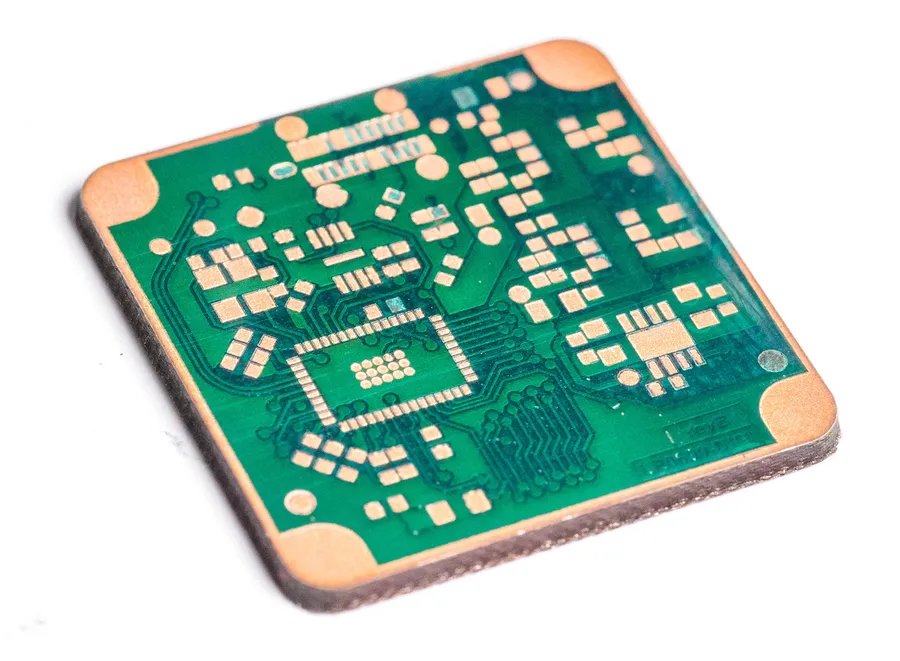
In today's fast-paced world of electronics, the ability to quickly prototype and create custom PCBs is invaluable. Laser engraving PCBs offers a precise and accessible method, bridging the gap between design and reality. This article dives deep into the techniques, challenges, and solutions for effectively using laser engravers in PCB fabrication, combining the allure of laser technology with the practicality of circuit board development to unveil its potential for hobbyists and professionals alike.
Understanding Laser Engraving for PCBs

Laser engraving for Printed Circuit Boards (PCBs) leverages the precision of focused laser beams to selectively remove material, typically a resist layer, revealing the underlying conductive copper for subsequent etching. This method offers a rapid and highly accurate alternative to traditional subtractive PCB fabrication techniques, allowing for intricate designs and rapid prototyping.
The fundamental principle involves using a laser to ablate a thin layer of material, where the laser's energy is converted into heat, causing the material to vaporize or decompose. This precise material removal enables the creation of the desired circuit patterns on the PCB. The effectiveness of laser engraving is dependent on several factors, including the type of laser, its power, wavelength, and the material properties of both the resist layer and the PCB substrate.
| Aspect | CO2 Laser | Fiber Laser |
|---|---|---|
| Wavelength | 10.6 μm (Infrared) | 1.064 μm (Near-Infrared) |
| Material Suitability | Effective for organics like resist materials. Less ideal for metals | Ideal for metals (like copper), can be used with some resist materials |
| Beam Diameter | Typically larger, resulting in broader cut widths | Typically smaller, enabling finer features and more precise cuts |
| Power | Lower power needed for organic resist ablation | Higher power generally required, better for metals |
| Cost | Generally lower initial cost | Generally higher initial cost |
| Complexity | Simpler design and maintenance | More complex setup and maintenance |
| Applications in PCB | Primarily for resist ablation, less effective for direct metal removal | Directly engraving copper, precise microvia creation and metal removal |
Compared to traditional PCB fabrication methods such as chemical etching, laser engraving provides several advantages. It enables rapid prototyping and design iterations, allows for precise control over feature dimensions, and reduces the need for harmful chemicals. However, it also presents certain limitations, including higher initial investment costs for equipment, potential challenges with very fine feature sizes depending on the laser type and material, and the need for careful parameter calibration.
Choosing the Right Laser Engraver for PCB Fabrication
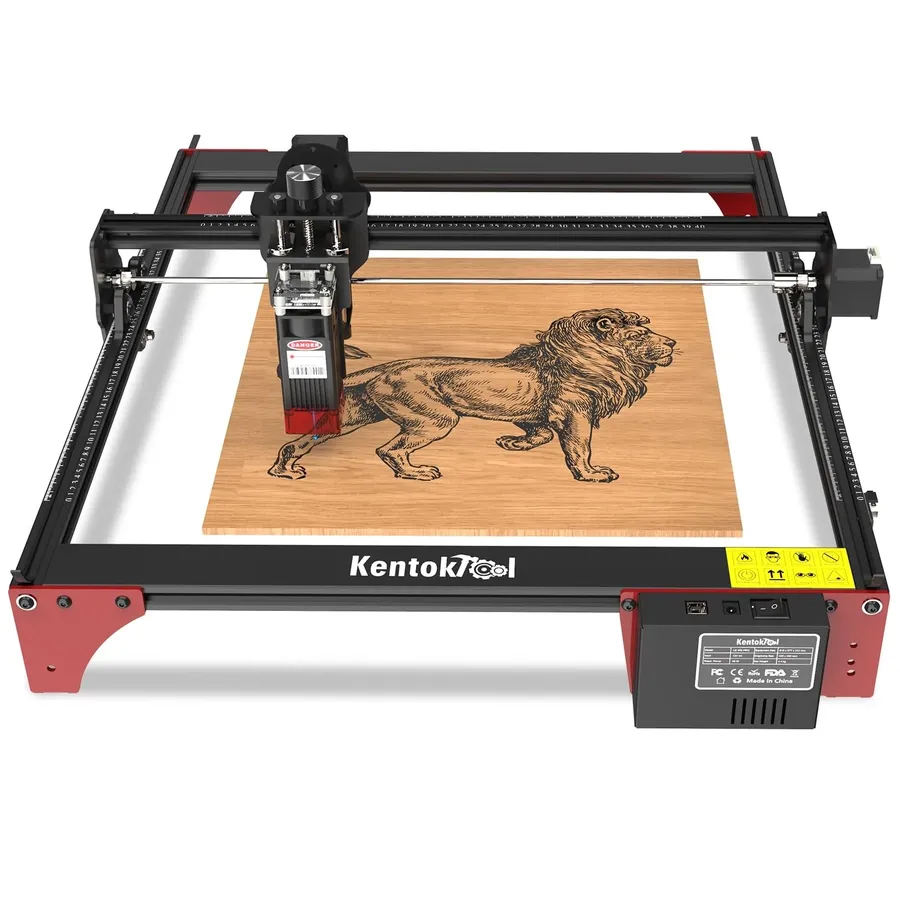
Selecting the appropriate laser engraver for PCB fabrication is crucial for achieving precise and cost-effective results. This section provides a detailed comparison of CO2 and fiber lasers, focusing on their suitability for PCB etching, while considering factors such as power, wavelength, and overall cost-effectiveness to guide you in making an informed decision based on your budget and specific project needs.
| Feature | CO2 Laser | Fiber Laser |
|---|---|---|
| Wavelength | 10.6 μm (Infrared) | 1.06 μm (Near-Infrared) |
| Material Compatibility | Suitable for organic materials, less effective on metals | Highly effective for metals and some plastics |
| PCB Etching Suitability | Can etch resist materials, but less efficient on copper | Excellent for direct copper etching if powerful enough, otherwise good for resist |
| Power Output | Typically available in a range of power levels suitable for resist removal | Available in a range of power, suitable for resist removal and some direct copper etching |
| Precision | Good for resist removal, but may require multiple passes for precise copper etching. | Higher precision, better for intricate patterns |
| Cost | Generally lower upfront cost, but ongoing maintenance can be higher. | Higher upfront cost, but lower maintenance over time and higher productivity |
| Maintenance | Requires periodic gas refills and optical alignment. | Generally lower maintenance and longer lifespan |
When considering cost, note that while CO2 lasers often have a lower initial investment, the operational costs can be higher due to the need for gas refills and more frequent maintenance. Fiber lasers, while pricier upfront, often offer better efficiency, lower maintenance, and longer lifespan, potentially resulting in lower long-term costs, particularly when directly etching copper, although very few can reach this power level without extremely high cost, resist is the more common option.
Materials and Preparation for Laser Engraving PCBs
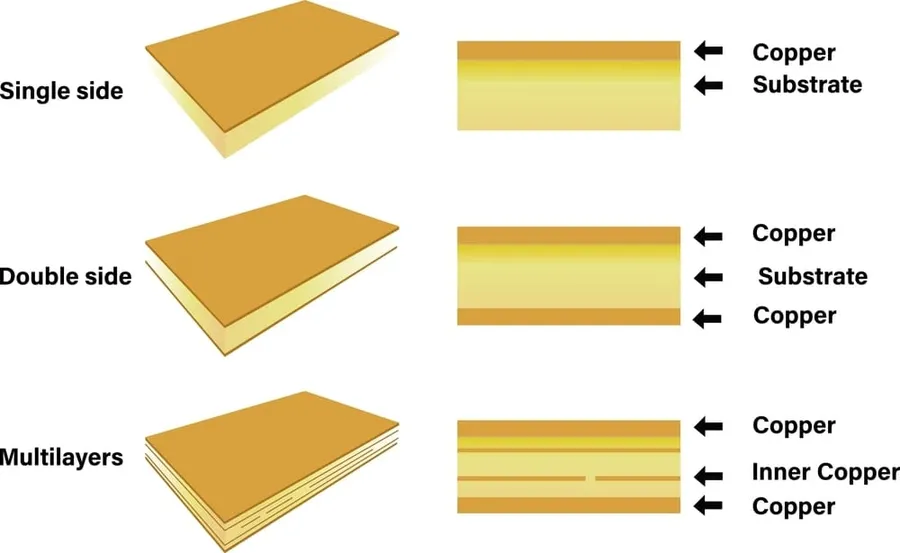
Successful laser engraving of PCBs hinges critically on the selection of appropriate materials and meticulous preparation. This section details the essential materials—copper clad laminates and resist materials—and outlines the necessary preparation steps, including resist application, cleaning, and surface treatments, to ensure optimal laser etching outcomes.
| Material | Description | Laser Compatibility |
|---|---|---|
| Copper Clad Laminates (CCL) | Base substrate for PCBs, typically FR-4 (fiberglass reinforced epoxy) with copper layers on one or both sides. | Compatible with both CO2 and Fiber lasers; Fiber lasers may offer greater precision for fine detail. |
| Photoresist | Light-sensitive coating used to create a protective layer for etching; available in various types (e.g., dry film, liquid) | Absorbs laser energy effectively for ablation; optimal thickness and composition vary by specific laser and application. |
| Laserable spray paint | An alternative to photoresist, applied evenly for laser etching. Must be laser-compatible to avoid residue or fumes. | Compatible with CO2 lasers; some formulations may be suitable for Fiber lasers at controlled power levels. |
- Resist Application
Apply the photoresist evenly to the copper-clad laminate. For dry film resist, laminate it using a heated roller or laminator, ensuring complete adhesion and no air gaps. For liquid resist, use spin coating or spray application, followed by drying. - Pre-Cleaning
Prior to resist application, thoroughly clean the copper surface of the laminate using isopropyl alcohol or a mild detergent to remove any oils, fingerprints, or contaminants. This promotes better resist adhesion and prevents etching defects. - Surface Treatment
Consider using chemical etching, mechanical abrasion or plasma treatment to increase the adhesion surface energy of the copper. This process improves the adhesion of the resist, resulting in more precise and repeatable laser ablation and etching performance. - Drying and Curing
After resist application, ensure the resist is completely dry and cured according to the manufacturer’s specifications. This often involves a baking process at a specific temperature and duration to achieve optimal resist hardness and laser ablation characteristics.
Step-by-Step Guide to Laser PCB Engraving Process
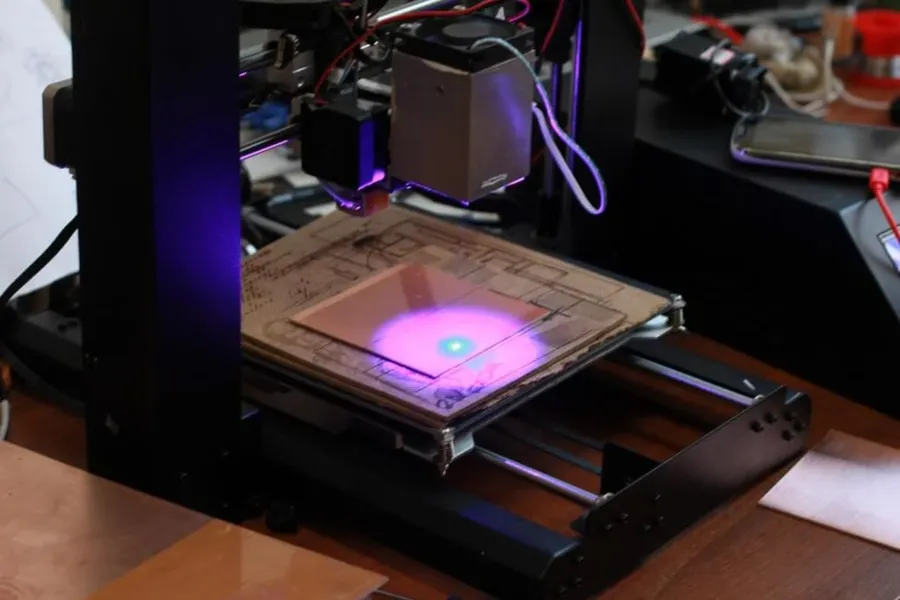
Laser PCB engraving is a precise process requiring careful execution from design to final product. This section provides a structured, step-by-step guide to ensure successful laser engraving of printed circuit boards, covering critical aspects such as file preparation, laser parameter settings, and post-engraving procedures.
- Design Preparation with CAD Software
Begin by designing your PCB layout using CAD software such as KiCad or Eagle. Ensure that all traces, pads, and vias are correctly placed. Export the design in a suitable format for laser engraving, typically Gerber or DXF format. Optimize your design for laser engraving by using appropriate line widths and clearances, which is crucial for precision. For example, if your design contains fine details, it's recommended to adjust the line widths to match the laser spot size, and the clearances between tracks must be adequate to prevent short circuits due to over-etching. - File Conversion and Optimization
Use software capable of converting your CAD output into a format understood by your laser engraver. This might involve converting Gerber files to vector format for better accuracy with laser systems. Optimize the laser path to minimize travel time and avoid overburning. This process often includes the application of hatching or other patterns on larger copper areas to ensure even material removal. The laser path should be programmed to follow the design accurately, with appropriate settings to minimize positional errors. - Material Preparation: Applying Resist
Apply a photoresist to the copper-clad board. The resist will act as a protective layer during the laser engraving process, preventing the laser from etching away the copper areas intended to remain. Ensure that the resist is applied evenly and without any imperfections that could affect the precision of your engraving. Allow the resist to dry completely before proceeding. - Laser Parameter Configuration
Configure your laser engraver with the appropriate power, speed, and frequency settings based on the material and resist you are using. This step is critical as incorrect settings can result in under or over etching. Conduct test runs on scrap pieces of material to calibrate your laser's settings, ensuring the settings are well-suited to your resist material and the copper layer of the PCB. Fine-tune the parameters until the desired etch depth and clarity are achieved. - Laser Engraving Process
Load your prepared design file into the laser engraver, then carefully position the PCB under the laser head. Start the laser engraving process, monitoring it closely to ensure proper operation. Once complete, remove the PCB from the laser bed. This step requires careful attention to detail. Watch for any anomalies or issues as they occur, as these can be addressed in real time. - Post-Engraving Cleaning
Remove any residual resist using an appropriate solvent. Ensure that all the unwanted resist is completely removed, leaving only the copper traces intact. Inspect the etched board for any defects. At this stage, ensure that all residue from the laser process has been removed, leaving behind a clean and well-defined copper pattern. Proper cleaning is essential for good soldering.
Software and File Preparation for Laser Engraving PCBs
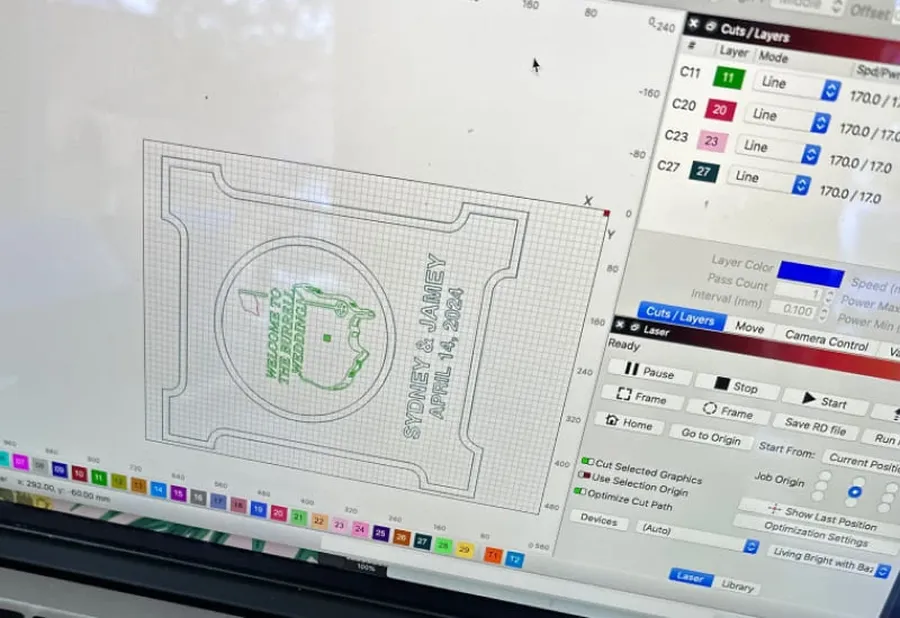
The precision of laser engraving for PCB fabrication hinges not only on the hardware but critically on the software and file preparation process. This stage is pivotal for translating CAD designs into accurate laser paths, optimizing for laser engraving parameters, and ensuring the successful transfer of design intent to the physical board.
The workflow typically involves exporting designs from CAD software like KiCad or Eagle into formats compatible with laser engraving software. This often requires converting complex PCB layouts into simplified vector graphics, adjusting for line thicknesses, clearances, and other design parameters specific to laser etching, and ensuring compatibility with the specific laser machine.
- CAD to Laser Software Workflow
The process begins with exporting PCB designs from CAD software in formats like Gerber or DXF, which are then imported into laser control software. This software is crucial for translating the design into machine-readable instructions for the laser engraver. - Optimizing Designs for Laser Engraving
Key design considerations include line thickness, clearance between traces, and the size of pads, which need to be adjusted to accommodate the laser's kerf (width of the laser beam) to ensure accurate and precise engraving. For example, trace width should be adjusted to be wider than the laser kerf so it will properly etch. - Importance of Proper File Format
The use of vector-based formats like DXF or SVG is recommended for laser engraving as they allow the laser to follow precise paths. Raster images can be used, but they may lead to less precise results due to the pixelated nature of these formats, in which the laser has to raster each line of the image instead of following a path. Also, it's essential to maintain correct scaling and units from the CAD design throughout the export and import process to ensure the engraved PCB matches the original design specifications.
Achieving Precise Laser Engraving: Addressing Common Challenges
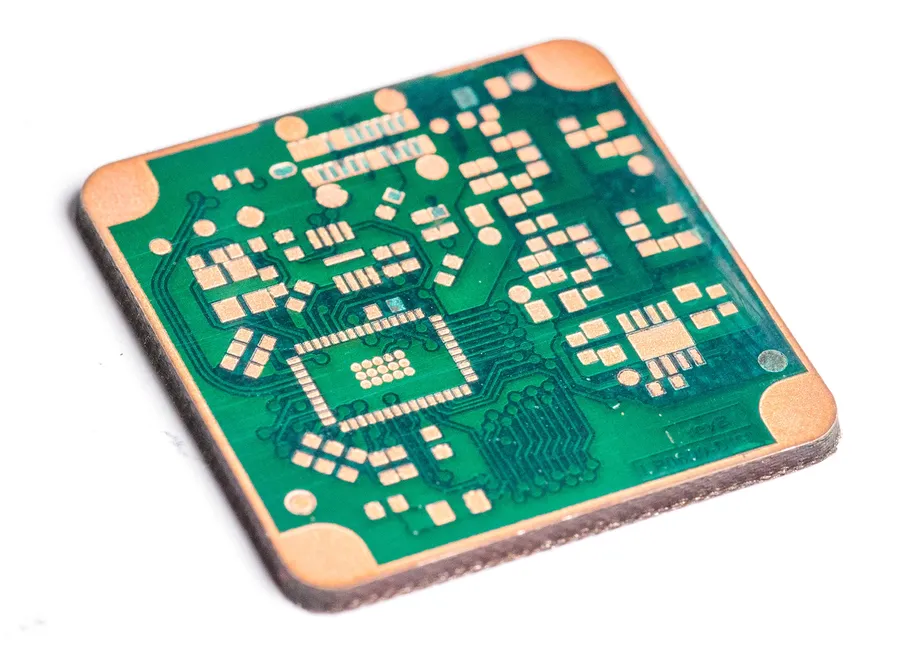
Achieving precision in laser PCB engraving requires careful attention to several factors that can lead to common issues such as over-etching, under-etching, and alignment inaccuracies. These challenges are often overcome through meticulous calibration, material testing, and the implementation of strategic techniques to ensure consistent, high-quality results. By understanding and addressing these issues, one can optimize the laser engraving process for effective and reliable PCB fabrication, while adhering to critical safety measures to mitigate potential hazards.
| Challenge | Description | Potential Causes | Solutions |
|---|---|---|---|
| Over-etching | Excessive material removal, resulting in widened traces and potential short circuits. | Excessive laser power, slow scanning speed, multiple passes, incorrect material settings. | Reduce laser power, increase scanning speed, optimize number of passes, calibrate material settings. |
| Under-etching | Insufficient material removal, leading to incomplete trace separation and potential connectivity issues. | Insufficient laser power, high scanning speed, incorrect material settings, inadequate resist. | Increase laser power, reduce scanning speed, optimize material settings, verify resist application. |
| Alignment problems | Misalignment between design file and the physical PCB, leading to errors in trace placement. | Inaccurate setup, improper fixturing, errors in software calibration, material movement during process. | Ensure accurate alignment, use precision fixturing, correct software calibration, stabilize material during process. |
| Inconsistent Etching | Variations in etching depth or width across the PCB. | Uneven laser beam intensity, variations in material properties, unstable laser performance, inconsistent resist application. | Calibrate beam intensity, ensure material uniformity, verify laser stability, improve resist application process. |
| Residue or charring | Burned material left on the PCB surface after etching. | Excessive laser power, slow scanning speed, improper material settings, inadequate air assist. | Reduce laser power, increase scanning speed, optimize material settings, enhance air assist to remove debris. |
Safety precautions are paramount when operating laser engraving equipment. Always wear appropriate laser safety glasses to protect your eyes from harmful radiation. Ensure proper ventilation to remove any fumes produced during the process and avoid contact with the laser beam, as it can cause serious burns and irreversible damage. Familiarize yourself with the specific safety guidelines of your laser equipment and adhere to them strictly.
Frequently Asked Questions About Laser PCB Engraving
This section addresses common queries regarding laser engraving of PCBs, providing clear and concise answers to help users understand the process, its limitations, and best practices.
- Can you effectively laser engrave a PCB?
Yes, laser engraving is a viable method for creating PCBs. It is particularly effective for prototyping and small-scale production, offering precision and flexibility compared to traditional etching methods. Laser engraving removes a resist layer, which then allows for the underlying copper to be etched away by a chemical bath. - What materials should NOT be laser engraved for PCB fabrication?
Certain materials are unsuitable for laser engraving due to their properties. Avoid materials with high reflectivity, which can damage the laser equipment, or those that release toxic fumes when heated. Specific materials such as certain plastics (like PVC) or metals that may not be suitable for vaporizing with low-power lasers should be avoided. Proper material selection is critical to both the success and safety of the process. - Why is laser engraving for PCB prototyping often perceived as expensive?
The perceived expense of laser PCB engraving stems from the high initial investment in laser equipment, the precision required for accurate results, and the specialized materials and software needed. However, for prototyping, laser engraving can be more cost-effective than traditional methods due to reduced lead times and material waste. The long-term benefits of precision and speed often justify the cost. - What is the best method for etching a PCB, and how does laser engraving compare?
The 'best' method depends on the project scale and requirements. Traditional chemical etching is often preferred for large-scale production due to cost efficiency. Laser engraving excels for prototyping, small batches, and when fine detail is needed. It offers greater control and precision, avoiding the use of harsh chemicals, but may be slower and more expensive for high volume production. The optimal method is highly project-specific. - What are the primary advantages of using laser engraving for PCB fabrication?
Laser engraving provides several key benefits: high precision and accuracy, making it suitable for intricate designs; rapid prototyping, enabling faster development cycles; reduced chemical usage compared to traditional etching; and the ability to make design changes quickly. The method is environmentally friendly since no hazardous chemical are required. - Are there limitations to the types of PCB designs that can be laser engraved?
While versatile, laser engraving may have limitations regarding extremely fine features or multilayer boards without specific alignment features. Very thin tracks or vias may not be successfully formed without precise laser power settings. Complex multi-layer boards may require a combination of laser and traditional fabrication methods. - What specific software is recommended for generating laser-ready files for PCB engraving?
Software such as KiCad, Eagle, and AutoCAD can be used to design PCBs. The final files should be output in a format such as Gerber or DXF that laser software can read and process. The laser engraving software will control the laser's parameters, allowing precise material removal as per the design. Optimizing the design in CAD is crucial for efficient laser engraving.
Advanced Techniques: Multi-Layer PCB Creation and Beyond
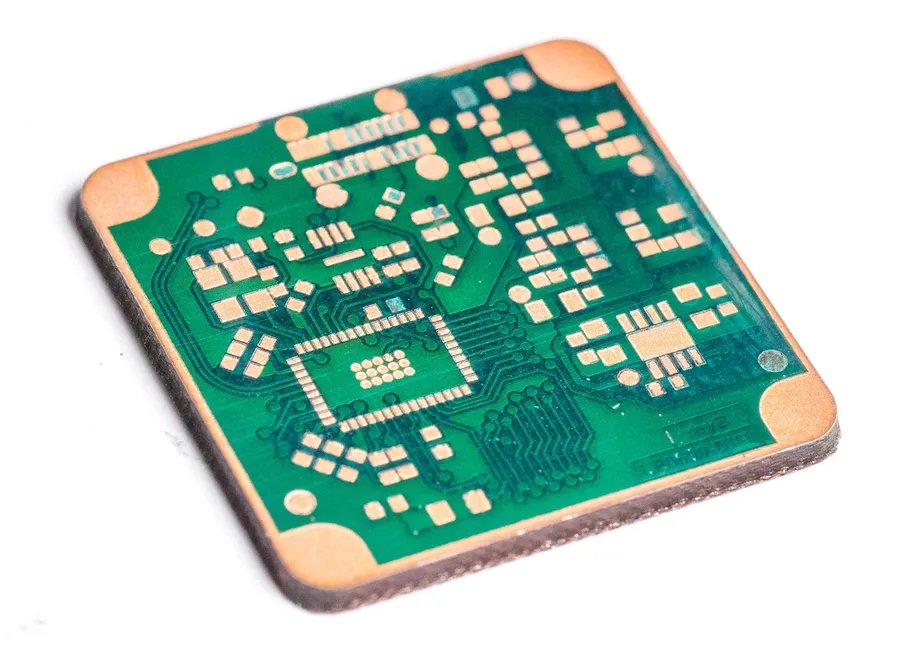
Laser engraving is not limited to single-layer PCBs; its precision enables the creation of multi-layer boards and intricate patterns, pushing the boundaries of PCB fabrication. This section delves into these advanced applications and the synergy between laser engraving and traditional manufacturing methods.
Multi-layer PCB fabrication with laser engraving involves selectively removing resist from multiple layers of copper clad laminate. This requires precise alignment between layers, often achieved with fiducial markers. The process allows for the creation of vias, interconnections between layers, and intricate signal traces, demonstrating the versatility of laser engraving in complex circuit designs.
Beyond multi-layer boards, laser engraving excels in creating specialized features, such as microfluidic channels, fine pitch component pads, or unique shapes on the PCB. The ability to control the laser's path and power with precision makes it suitable for customized solutions that traditional etching methods struggle to achieve.
The combination of laser engraving and traditional PCB manufacturing techniques offers numerous advantages. For example, laser engraving can be used for prototyping or fine-tuning specific areas, with mass production handled by conventional processes. This hybrid approach leverages the benefits of both techniques: precision and flexibility from laser engraving, and scalability and cost-effectiveness from conventional manufacturing methods.
Laser direct structuring (LDS) is a notable technique where laser engraving creates a pattern on a plastic part, which is then metallized. This method can create 3D circuits, integrating electronics directly into the structural components of a device. While not directly PCB fabrication, LDS shares the core laser engraving principles and showcases the expanded potential of this technology.
| Feature | Laser Engraving | Traditional Etching |
|---|---|---|
| Multi-Layer Capability | High precision for complex multi-layer | Standard process, limited precision |
| Intricate Patterns | Excellent for fine lines and unique designs | Challenging for very fine or non-standard shapes |
| Prototyping Flexibility | Ideal for quick design changes and adjustments | More time-consuming for revisions |
| Hybrid Manufacturing | Seamlessly integrates with traditional methods for optimal results | Requires separate processing for fine details |
Future Trends and Innovations in Laser Engraved PCBs
The landscape of laser-engraved PCBs is poised for significant evolution, driven by advancements in materials science, laser technology, and process optimization. These innovations promise to enhance precision, efficiency, and the scope of applications for laser-based PCB fabrication.
Emerging trends are focusing on several key areas:
- Advanced Laser Systems
Development of more precise and efficient laser sources, such as ultrafast lasers (femtosecond and picosecond lasers) that minimize heat-affected zones and enable finer feature sizes. These advanced lasers offer better control over material ablation and can engrave more complex patterns with higher resolution. - Novel Materials
The exploration and implementation of new substrate materials and resist coatings that are specifically engineered for laser processing. This includes materials with improved laser absorption characteristics and lower thermal conductivity, allowing for faster and more precise etching. - Automated Processes
Integration of laser engraving systems with robotics and automated handling for streamlined, high-throughput production of PCBs, reducing human error and enhancing productivity. - Enhanced Software and Design Tools
Development of sophisticated software tools that can optimize designs specifically for laser engraving and enable the integration of AI-driven algorithms for automatic parameter optimization. This will lead to more predictable and consistent results. - Integration with Additive Manufacturing
Combining laser engraving with additive manufacturing techniques (3D printing) to create complex three-dimensional circuit boards. The use of laser systems for precise material removal will be critical for defining features in such hybrid processes.
These advancements promise to address many limitations of current laser engraving technology, offering greater precision and higher efficiencies, thus, paving the way for future development of PCB manufacturing techniques. As a result, laser engraving will become an increasingly important part of PCB production.
Laser engraving PCBs offers a powerful blend of precision and accessibility, empowering makers with the means to rapidly prototype and fabricate circuits. From understanding the core principles to mastering advanced techniques, the ability to laser engrave PCBs provides a versatile skill set for those seeking to push the boundaries of circuit board creation. As laser technology advances, this method will become even more instrumental in shaping the future of electronics manufacturing. By embracing both innovation and precision, you can fully realize the potential of laser engraving in your PCB design and production journey.
 AnyPCBA
AnyPCBA